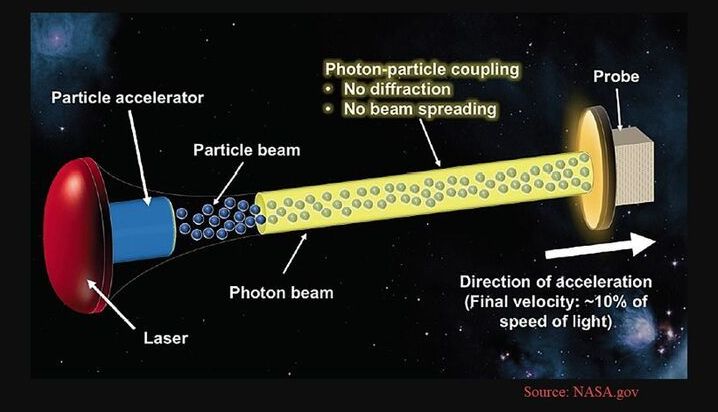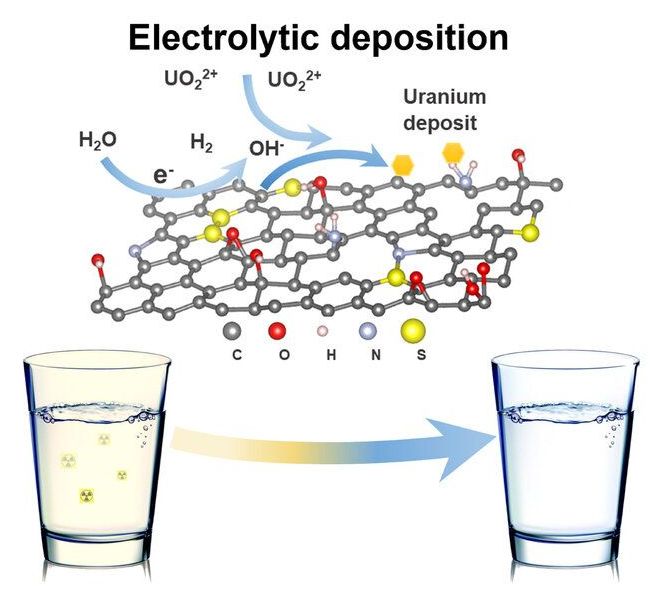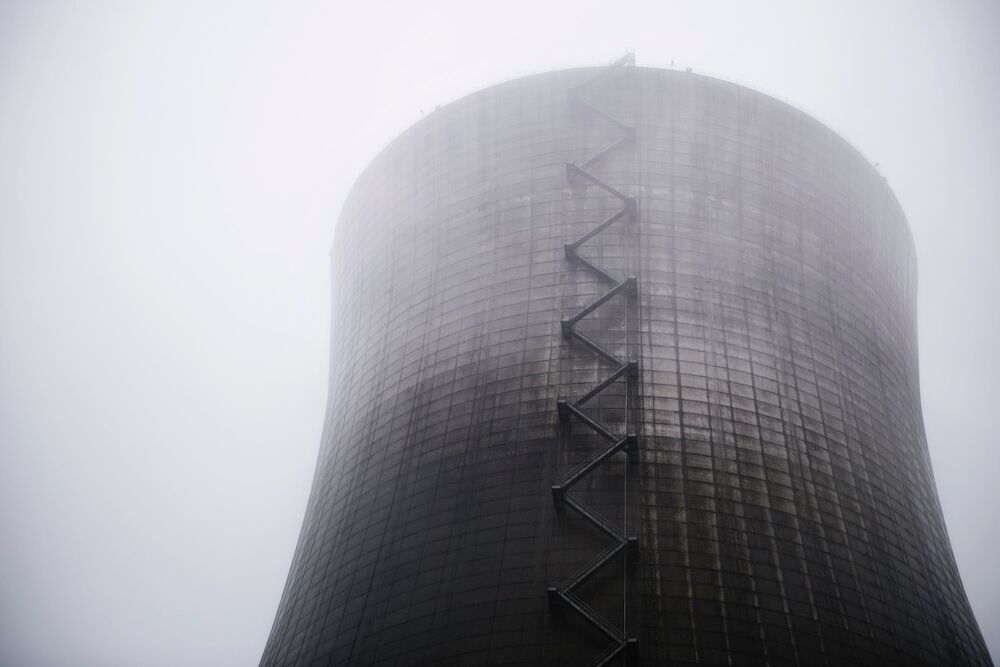US startup has combined radioactive isotopes from nuclear waste with ultra-slim layers of nanodiamond to create a battery that purportedly can 28,000 years, Tibi Puiu reported for ZME Science last week.



Circa 2016
Scientists and engineers since the 1940s have been toying with the idea of building self-replicating machines, or von Neumann machines, named for John von Neumann. With recent advances in 3D printing (including in zero gravity) and machine learning AI, it seems like self-replicating machines are much more feasible today. In the 21st century, a tantalizing possibility for this technology has emerged: sending a space probe out to a different star system, having it mine resources to make a copy of itself, and then launching that one to yet another star system, and on and on and on.
As a wild new episode of PBS’s YouTube series Space Time suggests, if we could send a von Neumann probe to another star system—likely Alpha Centauri, the closest to us at about 4.4 light years away—then that autonomous spaceship could land on a rocky planet, asteroid, or moon and start building a factory. (Of course, it’d probably need a nuclear fusion drive, something we still need to develop.)
That factory of autonomous machines could then construct solar panels, strip mine the world for resources, extract fuels from planetary atmospheres, build smaller probes to explore the system, and eventually build a copy of the entire von Neumann spacecraft to send off to a new star system and repeat the process. It has even been suggested that such self-replicating machines could build a Dyson sphere to harness energy from a star or terraform a planet for the eventual arrival of humans.

AIR PLASMA BREATHING via Ground Stations, in lieu of on-board energy supply: Recently, both a German team and a Chinese team have demonstrated jet engines capable of as much thrust as a traditional jet engine, but powered only by electricity. In both cases, the engine uses large amounts of energy to turn ambient atmosphere into plasma, then jetison it via magnetic nozzles. This is to be differentiated from space ion drives, which use tiny amounts of fuel, ejected at high velocities to slowly accellerate a vehicle in free space. By contrast, this new type of engine has huge amounts of fuel available to it in the form of the ambient atmosphere. Such craft could operate in any planetary atmosphere in our solar system, whether on Venus, Earth, Mars, the gas giant or ice giant planets. The only bottleneck holding this type of engine from replacing all current airplanes is the lack of a sufficiently dense on-board energy source. The most obvious enabling technology which will allow this new type of jet, which will require no fuel for its entire lifetime—since its fuel will be the atmosphere—is fusion energy. Fusion is dense enough to fit into a small package, easily mounted on an airplane. Until fusion is obtained there is one other possibility which is currently available, which is beaming energy to a flying vehicle from ground stations. An air-plasma-breathing vehicle, whether a self-standing airplane, or a partial booster phase for a rocket to low-earth-orbit, would have to follow a trajectory within direct line-of-sight of a series of ground beaming stations. A string of such stations would be akin to a land highway, a corridior within which air traffic or space-bound vehicles could travel. Such a corridior would be easy to create. Even over ocean, aircraft carriers or other nuclear vessels could transmit large amounts of energy to such vehicles. For rockets travelling to orbit, such a system would reduce reaction mass, since a portion of its fuel would not be carried by the vehicle. File: compilation of papers on beamed energy for flying vehicles:
Beam-powered propulsion, also known as directed energy propulsion, is a class of aircraft or spacecraft propulsion that uses energy beamed to the spacecraft from a remote power plant to provide energy. The beam is typically either a microwave or a laser beam and it is either pulsed or continuous. A continuous beam lends itself to thermal rockets, photonic thrusters and light sails, whereas a pulsed beam lends itself to ablative thrusters and pulse detonation engines.
The rule of thumb that is usually quoted is that it takes a megawatt of power beamed to a vehicle per kg of payload while it is being accelerated to permit it to reach low earth orbit.
This technology is also part of the research aim of the To The Stars Academy of Arts & Sciences. I compiled the below documents to explore the research the U.S. Government and Military has already collected and what they have tested in regards to the technology.

Some kinds of water pollution, such as algal blooms and plastics that foul rivers, lakes, and marine environments, lie in plain sight. But other contaminants are not so readily apparent, which makes their impact potentially more dangerous. Among these invisible substances is uranium. Leaching into water resources from mining operations, nuclear waste sites, or from natural subterranean deposits, the element can now be found flowing out of taps worldwide.
In the United States alone, “many areas are affected by uranium contamination, including the High Plains and Central Valley aquifers, which supply drinking water to 6 million people,” says Ahmed Sami Helal, a postdoc in the Department of Nuclear Science and Engineering. This contamination poses a near and present danger. “Even small concentrations are bad for human health,” says Ju Li, the Battelle Energy Alliance Professor of Nuclear Science and Engineering and professor of materials science and engineering.
Now, a team led by Li has devised a highly efficient method for removing uranium from drinking water. Applying an electric charge to graphene oxide foam, the researchers can capture uranium in solution, which precipitates out as a condensed solid crystal. The foam may be reused up to seven times without losing its electrochemical properties. “Within hours, our process can purify a large quantity of drinking water below the EPA limit for uranium,” says Li.

Circa 2020
The basic idea behind all nuclear power plants is the same: Convert the heat created by nuclear fission into electricity. There are several ways to do this, but in each case it involves a delicate balancing act between safety and efficiency. A nuclear reactor works best when the core is really hot, but if it gets too hot it will cause a meltdown and the environment will get poisoned and people may die and it will take billions of dollars to clean up the mess.
The last time this happened was less than a decade ago, when a massive earthquake followed by a series of tsunamis caused a meltdown at the Fukushima Daiichi power plant in Japan. But a new generation of reactors coming online in the next few years aims to make these kinds of disasters a thing of the past. Not only will these reactors be smaller and more efficient than current nuclear power plants, but their designers claim they’ll be virtually meltdown-proof. Their secret? Millions of submillimeter-size grains of uranium individually wrapped in protective shells. It’s called triso fuel, and it’s like a radioactive gobstopper.
Triso— short for “tristructural isotropic”—fuel is made from a mixture of low enriched uranium and oxygen, and it is surrounded by three alternating layers of graphite and a ceramic called silicon carbide. Each particle is smaller than a poppy seed, but its layered shell can protect the uranium inside from melting under even the most extreme conditions that could occur in a reactor.

Los Alamos National Laboratory has identified 45 barrels of radioactive waste so potentially explosive — due to being mixed with incompatible chemicals — that crews have been told not to move them and instead block off the area around the containers, according to a government watchdog’s report.
The safety board estimated an exploding waste canister could expose workers to 760 rem, far beyond the threshold of a lethal dose. A rem is a unit used to measure radiation exposure. In i ts latest weekly report, the safety board said crews at Newport News Nuclear BWXT Los Alamos, also known as N3B — the contractor in charge of cleaning up the lab’s legacy waste — have pegged 60 barrels with volatile mixtures and have relocated 15 drums to the domed area.
Forty-five barrels are deemed too dangerous to move, raising questions of what ultimately can be done with them and how hazardous it would be to keep them in their current spot.
“The current restrictions are that the containers shall not be moved,” the report said. “There is a marked buffer zone established around each container of potential concern, and intrusive operations are prohibited within the buffer zone.”
“We have really enjoyed working with General Fusion and their team of scientists on the design of the Fusion Demonstration Plant, and are particularly excited that the first of its kind will be built in the UK,” the studio told Dezeen.
A prototype power plant with a nuclear fusion reactor is set to be built in Oxfordshire, England, by Amanda Levete’s firm AL_A for the Canadian energy company General Fusion.
Located on the UK Atomic Energy Authority’s (UKAEA) campus in Culham, the Fusion Demonstration Plant will be used to prove the viability of General Fusion’s nuclear fusion technology as a carbon-free energy source.
A_LA said it will be the world’s first nuclear power plant of its kind upon completion in 2025.

“I suspect the French side is wondering whether the fuel rod damage is caused by something that they can directly address by modifying the equipment design, the water chemistry around the fuel, the plant operating procedures, or maybe even the fuel fabrication process to ensure that this doesn’t happen in other plants that are based on the Taishan design,” Fishman said.
Developer could be trying to find source of fuel rod damage to alter design in the future, analyst says.
😀
Helion plans to provide the first commercially viable nuclear fusion power! There remain obstacles, but zero-carbon energy is too promising to ignore.

According to the UCS report, however, sodium-cooled fast reactors such as Natrium would likely be less uranium-efficient and would not reduce the amount of waste that requires long-term isolation. They also could experience safety problems that are not an issue for light-water reactors. Sodium coolant, for example, can burn when exposed to air or water, and the Natrium’s design could experience uncontrollable power increases that result in rapid core melting.
Unlike light-water reactors, these non-light-water designs rely on materials other than water for cooling. Some developers contend that these reactors, still in the concept stage, will solve the problems that have plagued light-water reactors and be ready for prime time by the end of this decade.
The siren song of a cheap, safe and secure nuclear reactor on the horizon has attracted the attention of Biden administration officials and some key members of Congress, who are looking for any and all ways to curb carbon emissions. But will so-called advanced reactors provide a powerful tool to combat climate change? A Union of Concerned Scientists (UCS) analysis of non-light-water reactor concepts in development suggests that outcome may be as likely as Energy Commission Chairman Lewis Strauss’ famous 1954 prediction that electricity generated by nuclear energy would ultimately become “too cheap to meter.” Written by UCS physicist Edwin Lyman, the 140-page report found that these designs are no better—and in some respects significantly worse—than the light-water reactors in operation today.
Lyman took a close look at the claims developers have been making about the three main non-light-water designs: sodium-cooled fast reactors, high-temperature gas-cooled reactors and molten salt–fueled reactors. With little hard evidence, many developers maintain they will be cheaper, safer and more secure than currently operating reactors; will burn uranium fuel more efficiently, produce less radioactive waste, and reduce the risk of nuclear proliferation; and could be commercialized relatively soon. Those claims, however, do not hold up to scrutiny.